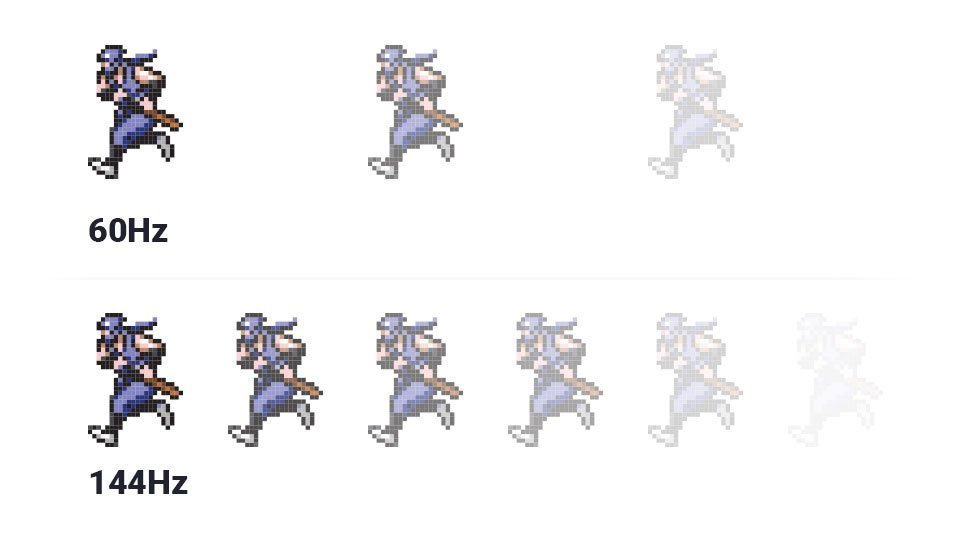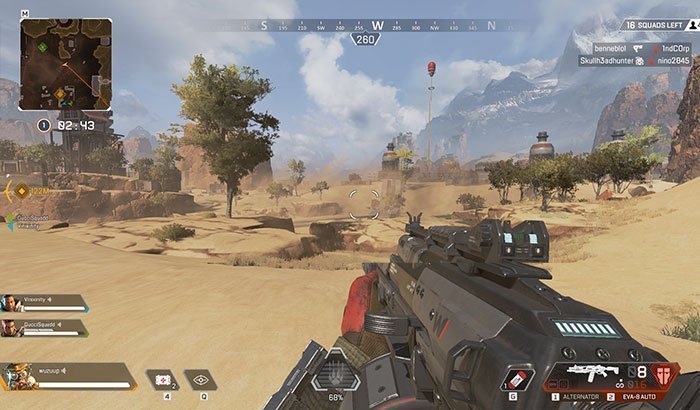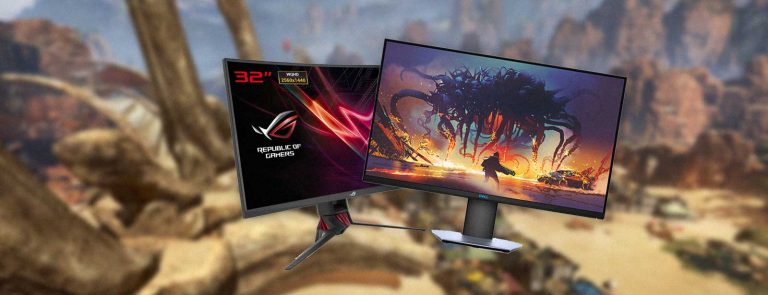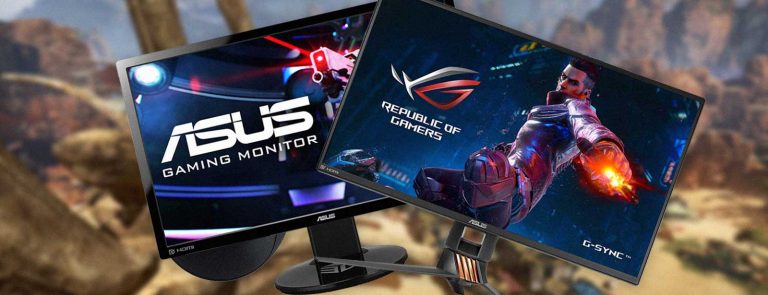What is the Best Refresh Rate for a Gaming Monitor?
Your monitor should be at least 60 Hz so that you can play games at 60 FPS at the bare minimum. Higher is better so you can opt to get a monitor with higher refresh rate if you want to but 144 Hz is seen as the sweet spot for 1080p and 1440p gaming.
Things used to be as simple as paying for a monitor and bringing to home but times have changed and now you need to worry about all kinds of different factors such as IPS or TN panels, refresh rates and response times.
Figuring out all this can be an issue if you do not know what you need or are new to all things.
If you are interested in learning about refresh rate and are in the market for a new monitor then you have come to the right place. Here we are going to talk about what refresh rate is and how it affects gaming. We are also going to talk about how high the refresh rate can go and what refresh rate is the best for gaming.
The major trade-off when getting a new gaming monitor is between higher resolution and higher refresh rate.
For example: You can have a mix of both at 1440p but you will find that the resolution drop when you increase the refresh rate and vice versa. You can get a 1080p 240 Hz monitor, but when you move to 4K you won’t be able to get the same refresh rate because your hardware will not be able to deliver so many frames at such a high resolution.
Does Refresh Rate Matter for Gaming?
Refresh rate can be described as the number of times per second a display refreshes an image. Refresh rate is what caps the frame rate in games. Both are not the same but we are not getting into the details. What you need to know is that the refresh rate is an attribute of the monitor and frame rate is the attribute of the information that is being sent to the monitor.
So, there is a difference between the two.
How does Refresh Rate Affect Gaming?
Higher refresh rate monitors provide a sharper and less blurry image. Especially if the object is in motion. If the refresh rate is low and the object is moving too fast then you might see this as a blur. A higher refresh rate monitor is able to keep up with the object and can provide ample information to your eyes so that blurring effect is removed and you get a clear moving object.
A higher refresh rate means that the gameplay will be smoother. If you play competitive titles that have a lot of fast movement then you will have a better experience gaming on a 120 Hz or 240 Hz display as compared to a 60 Hz monitor. The same cannot be said if you are watching a movie or browsing the web. Movies run at 24 FPS so having a higher refresh rate monitor will have no effect.

Your monitor should be at least 60 Hz so that you can play games at 60 FPS at the bare minimum. Higher is better so you can opt to get a monitor with higher refresh rate if you want to but 144 Hz is seen as the sweet spot for 1080p and 1440p gaming. Remember that higher refresh rates come at a cost and manufacturers do charge a premium for such monitors.
Some monitors have displays that can be overclocked. For example, the display might have a 1440 Hz refresh rate as stock but you could overclock it to 165 Hz. This is a costly feature to have and not many displays come with this feature.
What does Hz (Hertz) mean?
Hz is sometimes associated with performance like CPUs and clock speeds but that is not the same. Hz in this case, is a measure of refresh rate.
Do You Need a 144Hz or 240Hz Monitor for gaming?
144 has become the modern standard especially for players that play fast-paced games like Overwatch or CS:GO. Having a higher refresh rate has its advantages and who does not want buttery smooth gameplay?
240 Hz is another discussion entirely.
Yes, it does have its advantages but the difference between 60 Hz and 144 Hz is a major one. You might not feel the difference when moving to a 240 Hz display. You should try it out before you decide to get one because they are not cheap and it will not be worth it if you do not see the added benefits.
It all comes down to the kind of games that you are going to play. If you do not play competitive titles and focus on story-driven games then you will be better off spending your money on a higher resolution display rather than one that has higher refresh rates.
Stores often have screens on display and you can check out the different demos in order to check out the difference first-hand. While you are at the store you can also check out higher resolution TVs. These TVs have processors inside them that can alter FPS. Monitors do not have processors inside them so whatever the graphics card sends out is displayed on the screen.
Keep in mind that high refresh rate TVs are very expensive indeed and getting a monitor will be cheaper. The upside of getting a TV is that you can bigger screen size options and better viewing angles. Monitors are available in limited screen sizes and they commonly have narrow viewing angles.

Screen Tearing
Remember that refresh rates and frame rates are two different things and that they can mismatch. If that happens then you will notice screen tearing. This happens when the graphics card is pushing more frames than the refresh rate of the monitor. The monitor cannot handle so many frames at a time and that is why half frames can be spotted at times. This breaks immersion and is not something that you want when gaming.
A 120 Hz monitor refreshes twice as fast compared to a 60 Hz monitor and can handle 120 FPS. A 240 Hz display can handle 240 FPS. These monitors can reduce screen tearing but there are technologies that can help as well.
These technologies do have their drawbacks, V-Sync can cap performance. You need an AMD graphics card to be able to take advantage of Freesync and you need an Nvidia graphics card to use G-Sync.
Input response
Increasing the refresh rate also decreases input lag. If you have a 60 Hz display then you will never have visible input lag below 16.67ms. That is the time in which the screen refreshes the frame.
A 120 Hz display buts that time in half to 8.33ms. A 240 Hz display reduces that down to 3.16ms. This might not seem like a major issue for most people but this is something that you would be interested in if you are a pro gamer or just plain competitive.
This is something that some people will notice but others won’t so it greatly depends on the person in front of the screen.
Ultrawide Displays
Most monitors have an aspect ratio of 16:9. There are some that have a 16:10 aspect ratio but those are pretty rare. Nowadays we have ultrawide displays that have an aspect ratio of 21:9. These monitors can be great for gaming especially if you have a high-resolution model. These monitors also come in variants that offer higher refresh rates but you need to account for the extra pixels.
The unique aspect ratio and resolution mean that the graphics card has to render a higher resolution and more pixels as compared to a regular monitor. If you are interested in getting an ultrawide display then you will need to check whether or not your graphics card can cope with the higher resolution and extra pixels.
Another issue that you might face is support for these displays. Modern FPS games do not support horizontal FOV wider than 90 degrees. While this is fine for a standard monitor, it can cause stretching and image distortion on ultrawide displays. This is something that breaks immersion and just does not look good. The reason behind the lack of support is that the extra FOV can give players an unfair advantage over other players that do not have ultrawide displays.
You should look into the compatibility of the games that you are interested in playing but the general rule of thumb is that you should not get an ultrawide monitor if you are going to play FPS games. Another thing to keep in mind is that these monitors are relatively expensive and you will be paying even more for the higher refresh rate. If money is no object then you might as well get the best that money can buy but if you are on a budget then getting a regular 16:9 aspect ratio display will be much cheaper.
TV vs Monitor
TVs that offer higher refresh rates often have an issue that is called the soap opera effect. This results in a TV show or movie appearing smoother than natural. This might be an issue when viewing content but it will not affect gaming. It is worth mentioning that high refresh rate TVs are more expensive but then again, the same can be said for gaming monitors as well.
Some TVs are designed for gaming but as you can tell, such TVs are priced higher. If you do need a bigger display for gaming then you can opt for a TV but you will need to pay a higher price.
If you are interested in saving some money or want higher refresh rates then you will be better off getting a monitor instead. If you do buy a TV then it is recommended that you get a model that supports higher refresh rate natively rather than use trickery.
Make sure your Computer (GPU) can deliver enough FPS for a High Refreshment Monitor
While there is no doubt that higher refresh rates are better in most cases, the graphics card is the component that needs to push frames to the screen and it is a limiting factor that you cannot overlook. It will be useless to get a 144 Hz monitor if your graphics card cannot output 144 FPS in games. You will need a decent graphics card in order to get higher FPS in games and take advantage of the high refresh rate that you monitor offers.
This is one of the reasons why you do not see crazy monitor specifications like 4K 240 Hz because it takes a lot of power to run games at 4K. The higher resolution is taxing on performance and modern graphics cards can barely run games at 4K 60 FPS. That is a perfect example of why you need to keep your graphics card in mind when in the market for a high refresh rate monitor.
Some modern multiplayer games are not taxing on the graphics card and can run easily at 144 FPS or 120 FPS games like CS: GO can easily hit 240 FPS on modern hardware but there are other titles like PUBG that are not optimized the same way. You will need to turn down the settings fair bit in order to get to 120 FPS and getting to 240 FPS might not be possible for most people as that would require some serious hardware.
Final Words
The difference between 60 Hz and 120 Hz is significant and you should make the switch if you are interested in a better and smoother gaming experience. We cannot recommend 240 Hz displays because your graphics card might not be able to deliver the kind of performance that you need in order to take advantage of a 240 Hz display. We can only recommend 240 Hz displays to people that play competitively or are pro gamers that need the best gaming experience possible.
If you are interested in getting an ultrawide then you need to account for the additional pixels and the unique resolution. Make sure that the games that you are interested in playing actually support the ultrawide format. Other than that, take into account what your graphics card can handle before picking a display.


